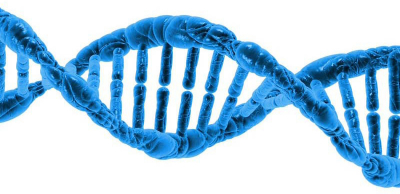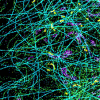
A study recently conducted at the Circular Dichroism beamline (B23) at Diamond Light Source, UK, could lead to a new forensic DNA profiling technique. Researchers from the Ivanovo State University of Chemistry and Technology, Russia, The University of Southampton and Diamond investigated the application of specially designed DNA building blocks. The structure of DNA means it can be used as a versatile template for a variety of applications. Porphyrin-modified nucleotides in particular drew the attention of the scientists of this study, as porphyrin strongly absorbs light; this molecule is derived from the natural haem and is also related to chlorophyll. They explored the properties of a zinc porphyrin 2′-deoxyuridine building block (ZnTPP-dU), but also designed a new porphyrin-derivative based on magnesium(II) 5,10,15,20-tetraaza porphine (porphyrazine, MgTAP-dU).
Both nucleosides were tested for their ability to bind to DNA, and their optical properties were analysed using spectroscopic techniques, including circular dichroism at B23. They found that the novel porphyrazine was highly fluorescent when bound to DNA, and decided to test its ability to detect forensically relevant short sections of DNA. They noted that its fluorescence was significantly increased in the presence of neighbouring adenosine nucleosides.
The stepwise increase in fluorescence upon increasing the number of nearby adenosines could predict the length of a section of DNA, and this makes porphyrazine highly suitable for the analysis of DNA sequences that contain multiple repeats of nucleotides. In fact, the team demonstrated that porphyrazine could quantify short tandem repeat sequences in short sections of DNA, which are used in DNA analysis of related organisms. This technique forms the basis of forensic DNA profiling to identify individuals based on their genetic material.
This new approach could see the development of other nucleosides bearing different fluorescent components to fully profile DNA.
The work has been reported in European Journal of Organic Chemistry.










